Boots on the ground: Insights on a Turkey post-earthquakes mission.
STRUCTURAL RISKEARTHQUAKE ENGINEERING
11/30/20237 min read
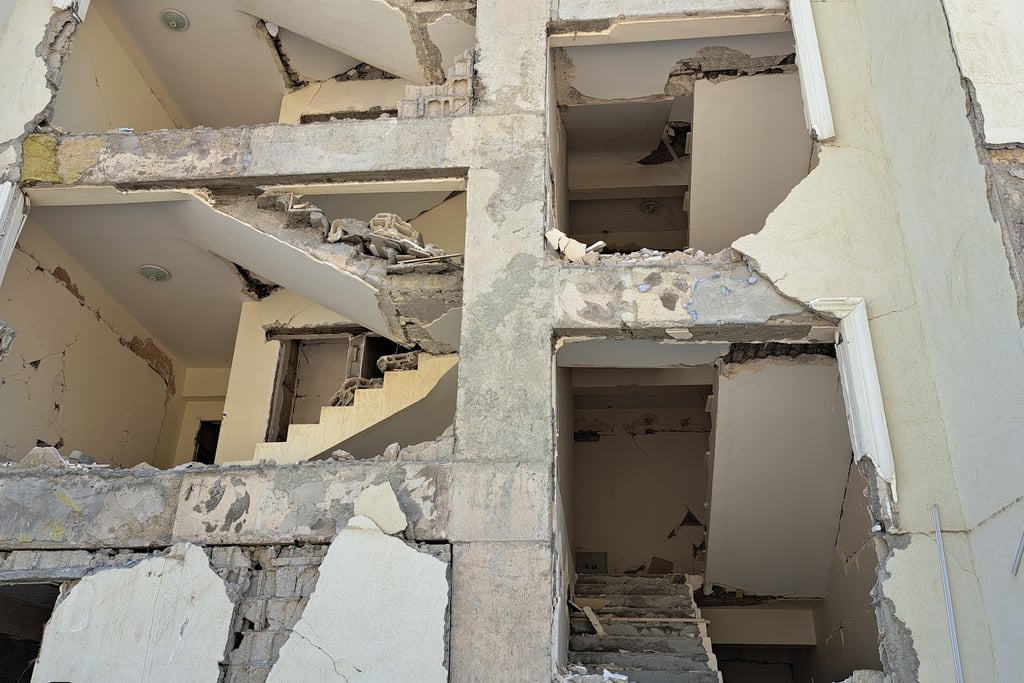

On February 6th 2023, a Mw = 7.8 earthquake struck South Turkey and North Syria at 4:17 am, followed by a Mw = 7.5 earthquake a few hours later and multiple significant aftershocks, which enlarged the affected footprint and worsened the damage on the structures [1]. Over 50,000 people were killed during these events [2], while more than 1.25 million people were rendered homeless [3]. Early estimates suggested losses above 34 billion USD (4% of the country’s GDP) [3]. According to a reinsurer broker's estimates, insured losses surpassed the 5 billion USD barrier, making it the largest industry loss for the Turkey market on record.
In June 2023, the Author was invited to join an EEFIT field mission focused on studying the effects of the earthquake sequences on residential infrastructure of the region, particularly multi-family tall buildings. This mission included visits to the provinces of Kahramanmaraş, Hatay, Gaziantep, Adiyaman, Malatya and Osmaniye. Although the mission was focused on a specific building typology, several general observations were made that are relevant to the entire property portfolio of the region. Some of these observations are presented in this briefing report with the objective of providing a glimpse on the ground situation four months after the disaster.
A perspective on the structural damage observations.
According to the World Bank [5], the percentage of people living in urban areas has increased from 25% to 75% in the last 70 years, which, along with a steady population growth larger than the world’s average, represents one of the most dramatic urbanisation processes in history. This has naturally led to the rise of urban infrastructure to accommodate this quick growth. This has been reflected in many mid- and high-rise structures being built throughout the Turkish cities.
Because of the building stock characteristics, along with the dynamic properties of the recorded ground motions, a large number of these structures were heavily affected and many of them collapsed. Unlike some other earthquake-related disasters, the extent of the damage was not primarily concentrated on old non-retrofitted structures but was also extensive in recently built infrastructure. As an example of the extent of the damage, Figure 1 shows a comparison of satellite pictures for the city of Antakya before and after the earthquakes. The contrast of these images allows to dimension the size of the affectations left by the earthquakes.
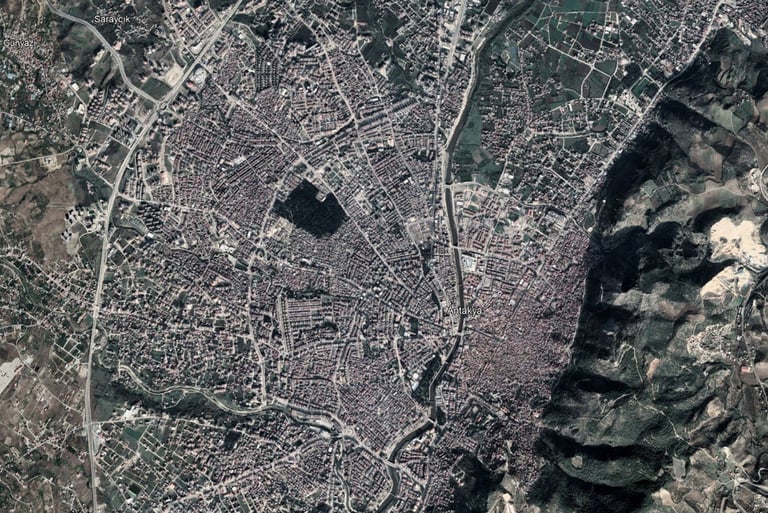

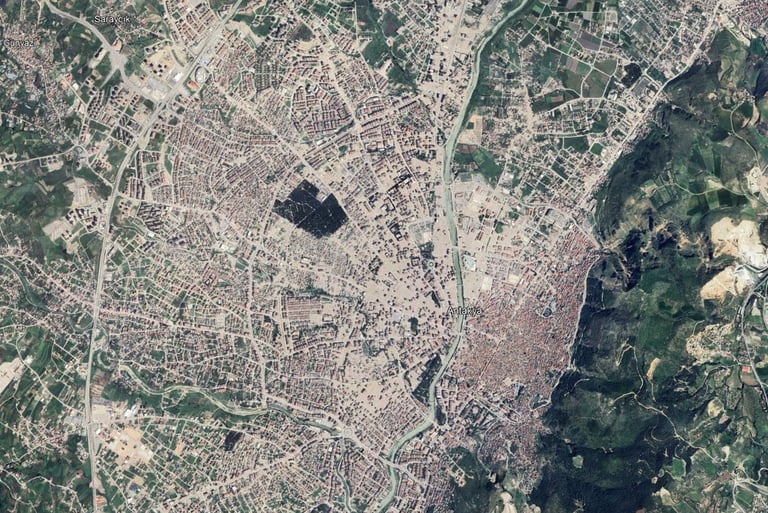

(a) Antakya in February 2023
(b) Antakya in April 2023
Figure 1. Before and after satellite view of the city of Antakya. Picture (a) was taken before the earthquakes in February 2023, while picture (b) was taken on April 2023. (Credits to Maxar Technologies, Airbus and Google Earth)
Some of the damage observed in the field left evidence of poor construction practices. Some of these practices have been addressed in modern design codes, yet many of these code updates have not been effectively addressed during the construction processes, while many existing structures were built before the incorporation of these changes into the building codes. Some examples of these deficiencies are shown in Figure 2.
Figures 2 (a) and (b), for example, show the front and back walls of a 12-storey shear-wall building located on the coastline of Iskenderun. Although it is not a straightforward task to determine if the amount of reinforcement was sufficient or if the design resistance of the concrete was reached, it is evident that some omissions were made during the construction process. For example, the angle of the hooks in the steel ties was observed to be 90°, rather than the 135° required by most modern regulations, which may have limited the confinement effect of the reinforcement and reduced the capacity of the shear wall. Moreover, rather than having the vertical longitudinal bars overlapping at alternating heights along the wall, the overlap is concentrated at the bottom portion of the wall, leading to a sudden change of the steel reinforcement on the portion of the wall which is likely experiencing the largest earthquake demands. These deficiencies were not only observed in this building, but in several damaged structures throughout the region, as well as buildings under construction.
Another example of construction (and perhaps design) deficiencies is shown in Figure 2 (c). This image captures the boundary between two 11-storey shear-wall buildings located in Malatya. They are part of a social-housing development composed of over a hundred of these buildings, all of which are clustered in two or three adjacent building sets and exhibited similar damage patterns. As observed, the separation between the structures is practically non-existent, except for a 5-centimeter polystyrene layer. In addition, this layer was observed to have moved during the pouring of the concrete, while the concrete was not adequately vibrated, and air bubbles were often observed. All the buildings assessed in this development exhibited the damage pattern observed in Figure 2 (d), in which the shear walls of the basement and ground floors failed by shear in the East-West direction.
Although the deficiencies described above were observed in multiple buildings and regions, they do not necessarily account for the entirety of the building collapse cases. It should be taken into consideration that the ground motion demand characteristics in some areas were well above those stochastically defined in the codes, having recorded peak ground accelerations (PGA) of over 1.0 g and associated return periods [6] larger than the typical values used for the design of new structures. Moreover, the deficiencies reported were observed in non-collapsed buildings, having the possibility of missing other relevant deficiencies because of the survival bias. Yet, it is worth noting that several collapsed (reinforced concrete) moment resisting frame structures were observed throughout the territory in comparison to other structural typologies, although their failure modes were not studied during this mission.
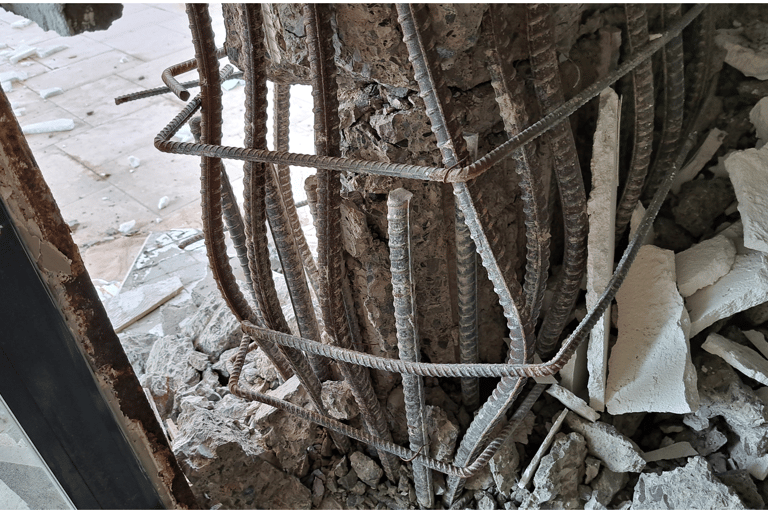

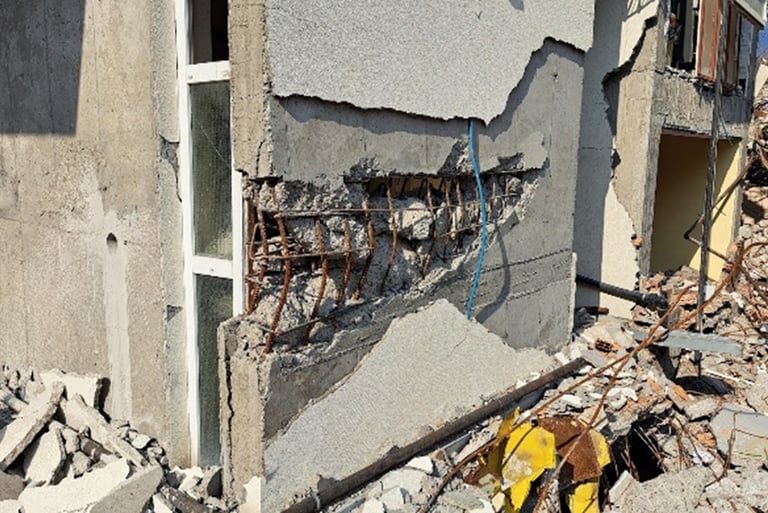

(a) Damaged shear wall in Iskenderun
(b) Damaged shear wall in Iskenderun
Figure 2. Exhibits of building deficiencies and damage patterns observed in Iskenderun and Malatya.
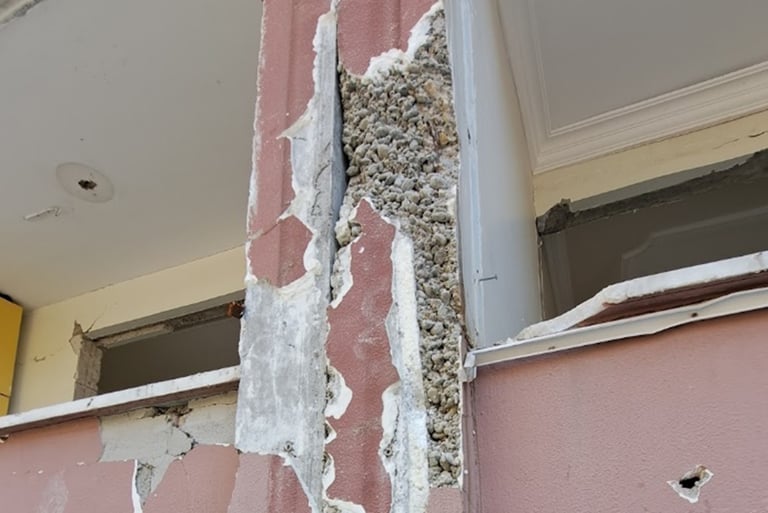

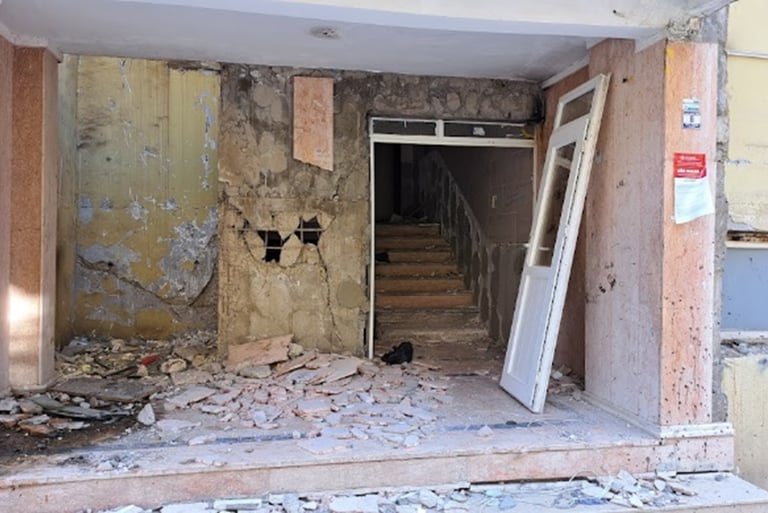

(c) Construction deficiencies observed in Malatya
(d) Failure pattern of buildings in Malatya
The role of non-structural components and their impact on repair cost and downtime.
Even though the non-structural damage does not (normally) compromise the stability of the structure, it leads to severe losses because of repair costs and downtime. During the mission, it was observed that non-structural damage was present in all kinds of structures regardless of their lateral load resisting system. However, it was especially observable in flexible buildings, such as moment resisting frames, most of which exhibited some degree of non-structural damage.
Figures 3 (a) and (b) show the non-structural damage observed in moment resisting frame structures in Antakya and Malatya. A few aspects are worth highlighting: (1) despite very limited structural damage, the non-structural damage has rendered these structures unusable even four months after the earthquakes and for the foreseeable future; (2) the falling debris during the earthquake posed an additional hazard to the evacuating residents; and (3) the loss of non-structural components is closely related to the loss of building contents. Although it is unclear if these specific buildings will be repaired or demolished, it was observed that many (physically) repairable structures were being demolished due to the large repair and retrofitting costs, while other heavily damaged buildings were being repaired by their construction companies to avoid the associated reputational damage.
Entire neighbourhoods, some of them with hundreds of mid-to-high-rise buildings, were evacuated and their residents were displaced to temporarily government shelters, relatives’ homes and emergency tents placed right next to the evacuated sites. Figure 3 (c) shows an example of these neighbourhoods in Antakya, in which thousands of families were permanently displaced as a consequence of heavy non-structural damage (and possibly structural damage). As a consequence of this, the Turkish government has undergone a large and unprecedented rebuilding campaign throughout the region to provide the urgently needed housing, mostly based on tunnel-form buildings (see Figure 3 (d)), which standardised construction processes allow for the quick erection of the structures. Thus, the challenge for the country is not to provide a fast solution for accommodation of the displaced communities, but to make sure that the highest design and construction standards are followed to the letter. To build back better.
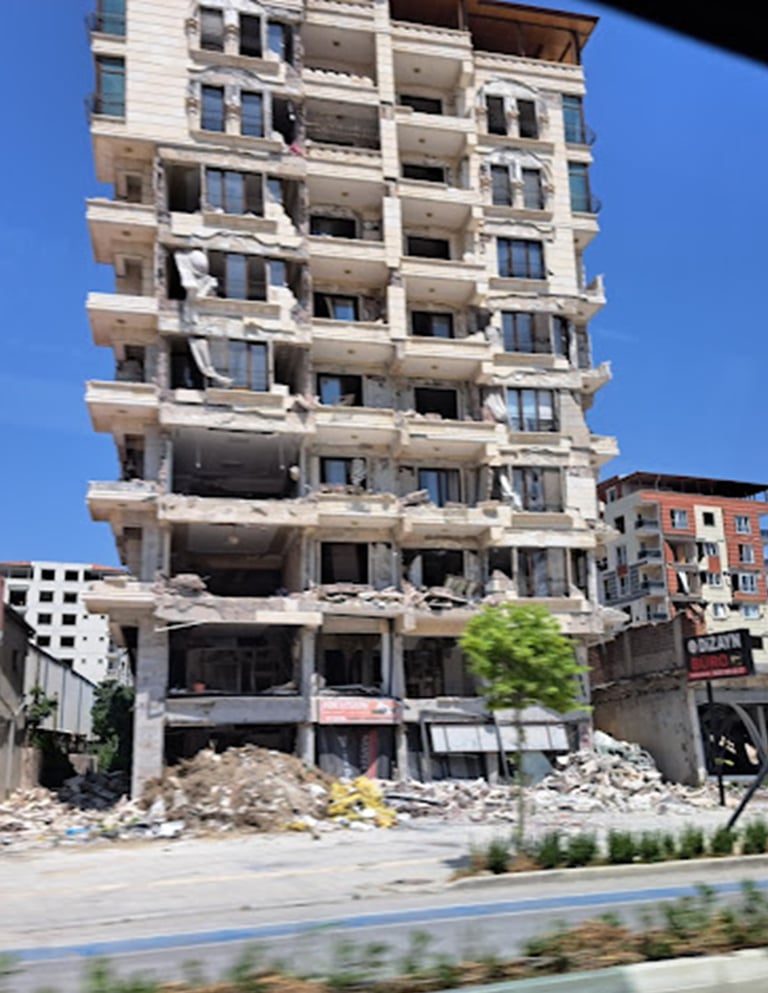

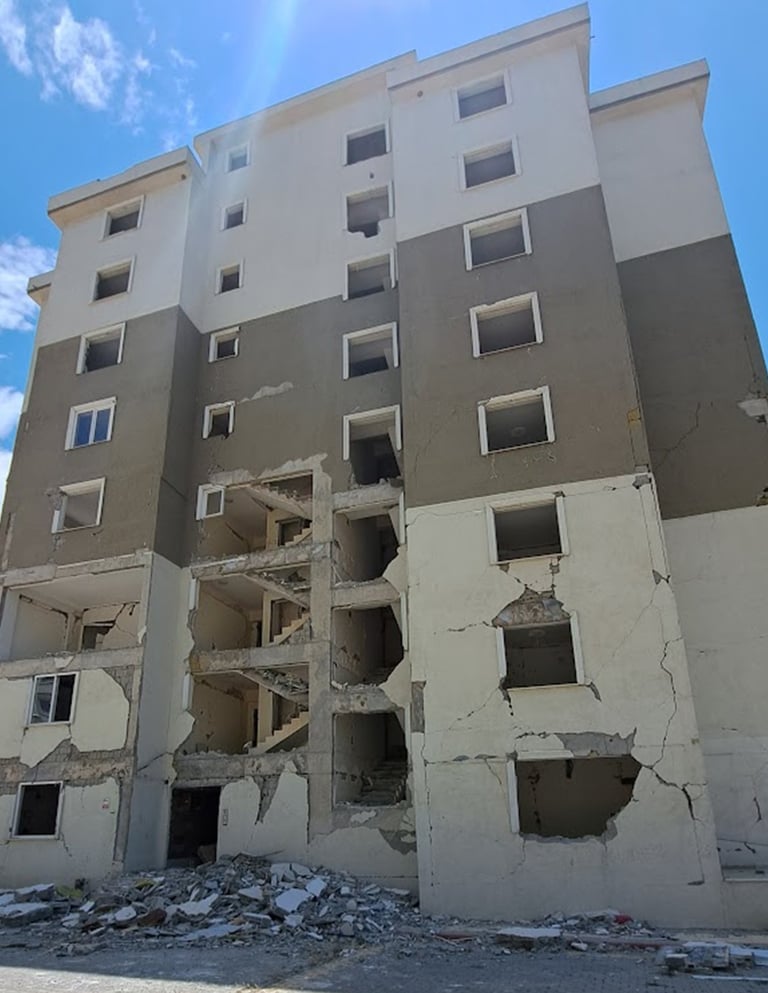

(a) Non-structural damage in a moment resisting frame in Antakya
(b) Non-structural damage in a moment resisting frame in Malatya
Figure 3. Examples of non-structural damage observed during the mission (a to c) and reconstruction efforts (d).
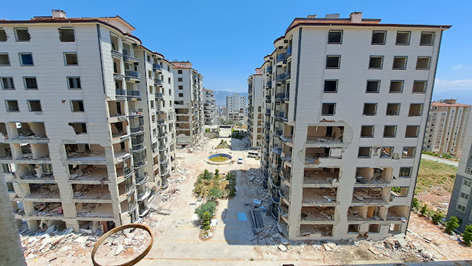

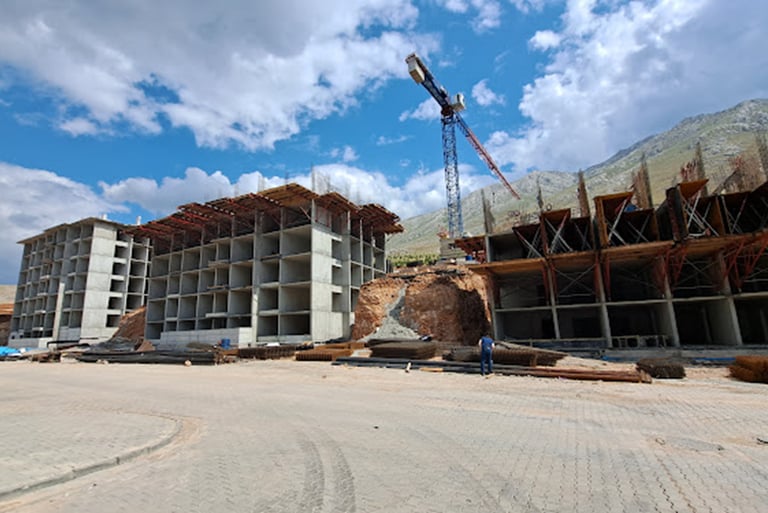

(c) Evacuated residential neighbourhood in Antakya
(d) Reconstruction efforts by the Turkish government
Earthquake Engineering Research Institute, Geotechnical Extreme Event Reconnaissance Association, Earthquake Engineering Association and Earthquake Foundation of Türkiye. February 6 , 2023 Türkiye Earthquakes: Report on Geoscience and Engineering Impacts. 2023.
International Medical Corps. Syria/Turkey Earthquakes. Situation Report #7 2023.
The World Bank. Earthquake Damage in Türkiye Estimated to Exceed $34 billion: World Bank Disaster Assessment Report. Press Release No: 2023/ECA/66 2023.
Gallagher Re. Q1 2023 Natural Catastrophe Report - Preliminary Overview. 2023.
The World Bank. Rise of the Anatolian Tigers. Turkey Urbanization Review. April 2015.
Baltzopoulos, G. et al. (2023) ‘Near-source ground motion in the M7.8 Gaziantep (Turkey) earthquake’, Earthquake Engineering and Structural Dynamics, (February), pp. 1–10. doi: 10.1002/eqe.3939.

